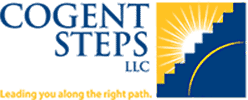Autonomic Dysreflexia & Boosting in Adaptive Sports Athletes
As adaptive sports become more mainstream and athletes push to be involved in all levels of competition it is important for sports care providers to understand specifics regarding these athletes Autonomic Dysreflexia and Boosting are areas that can create significant problems with athletes in adaptive sports.
This online training module on Autonomic Dysreflexia & Boosting in Adaptive Sports Athletes is used for the completion of your ERA Recertification. Please make sure you have registered for an ERA Recertification Course HERE, before attempting to complete this module.
This online training module consists of a:
- Didactic Chapter
- Video Lecture
- Final Quiz
Objectives
After this lesson, the learner will:
- Distinguish key features related to the pathophysiologic mechanism of autonomic dysreflexia.
- Identify the types of sports and athletes that may be at the highest risk for autonomic dysreflexia.
- Recognize the most common signs and symptoms associated with an acute onset of autonomic dysreflexia.
- Describe the appropriate emergency management of an athlete experiencing autonomic dysreflexia.
- Explain the benefits and concerns related to boosting in adaptive sports.
- Summarize recommendations for the prevention of autonomic dysreflexia in the adaptive sports athlete.
ATTENTION – Virtual ERA Recertification Students: You received an email from Shelly Weinstein with login information to complete your LAB/hands-on skills via the platform FLIP. If you did not receive this, please contact Shelly ASAP. This work is due 1 week before the live course.

